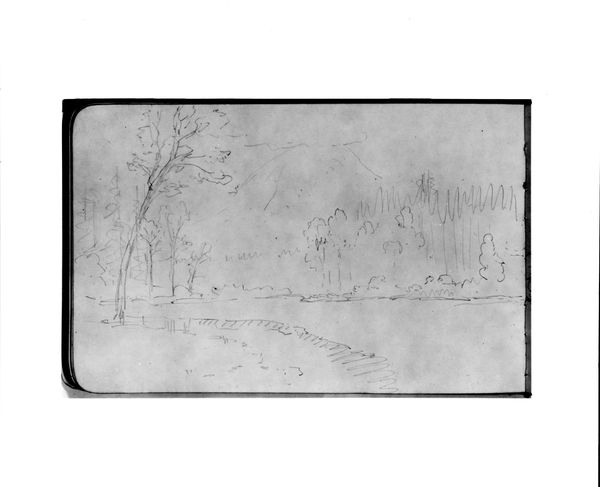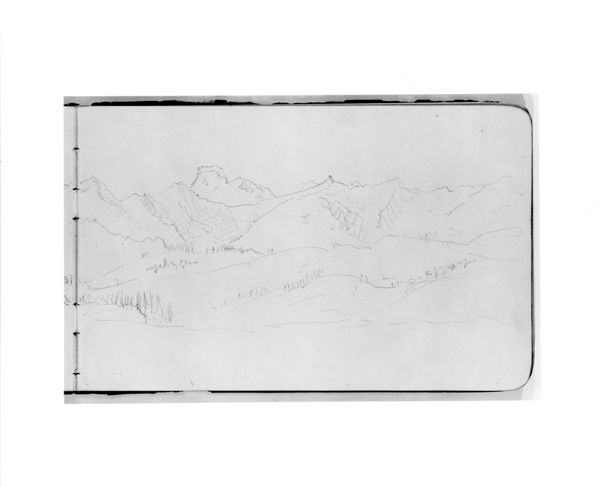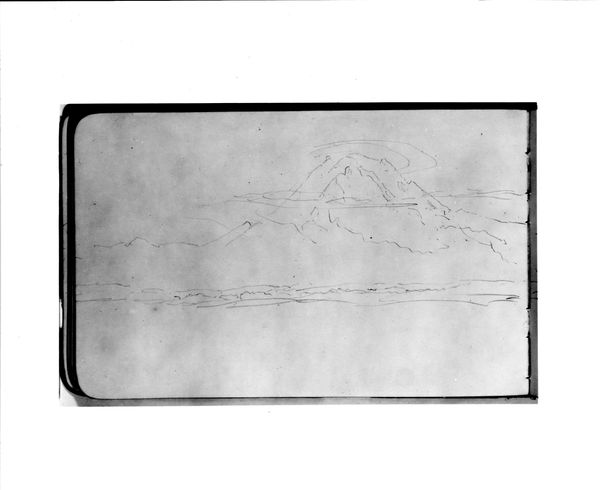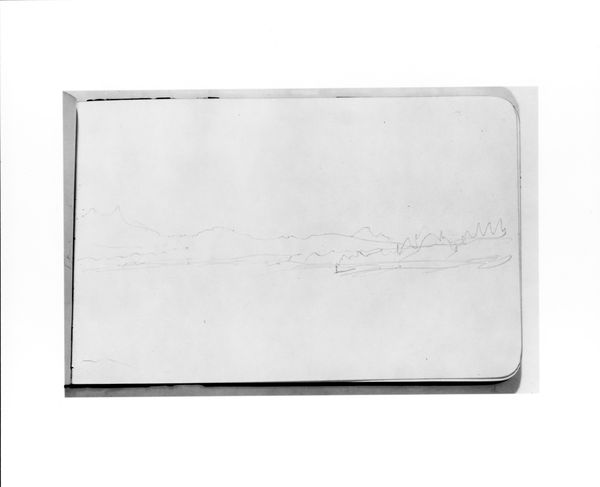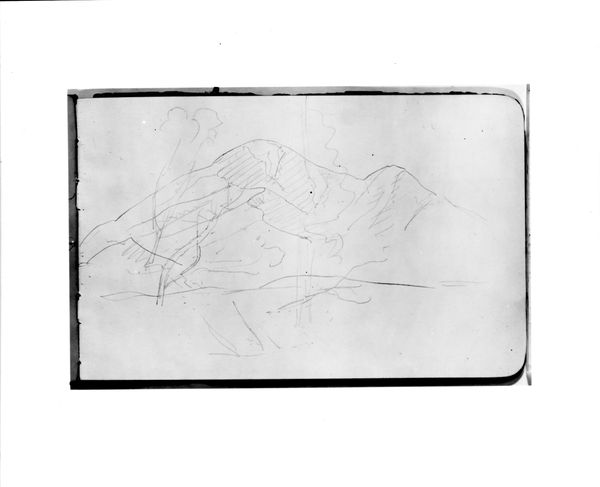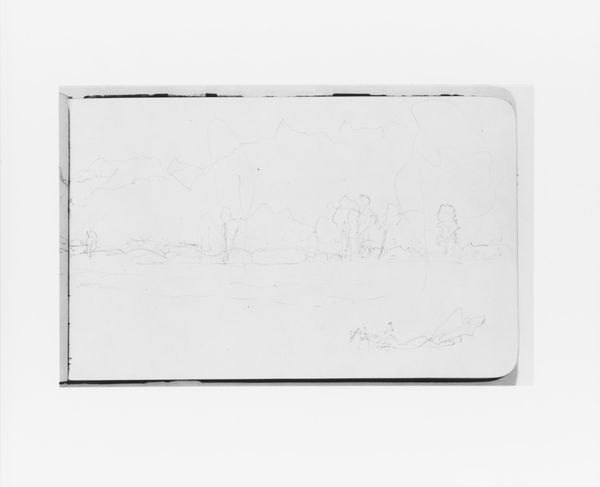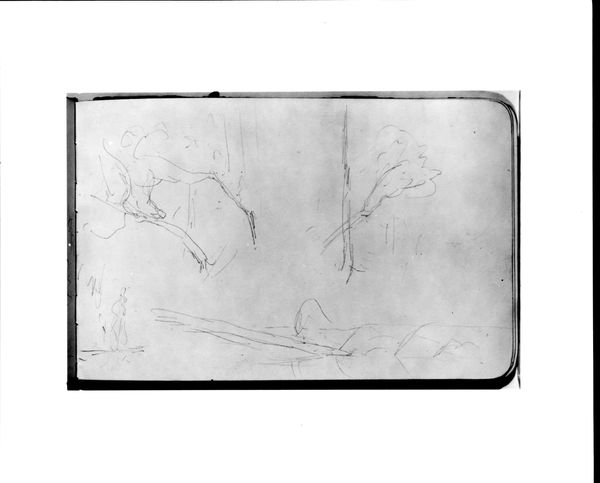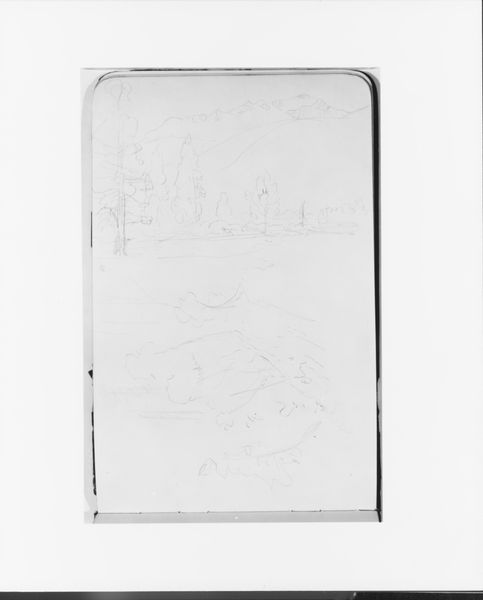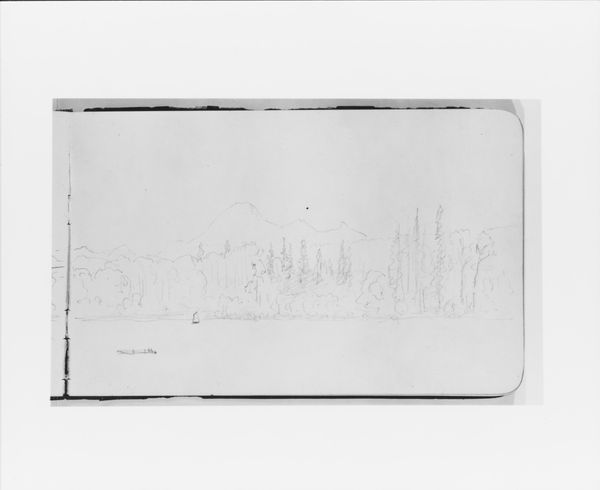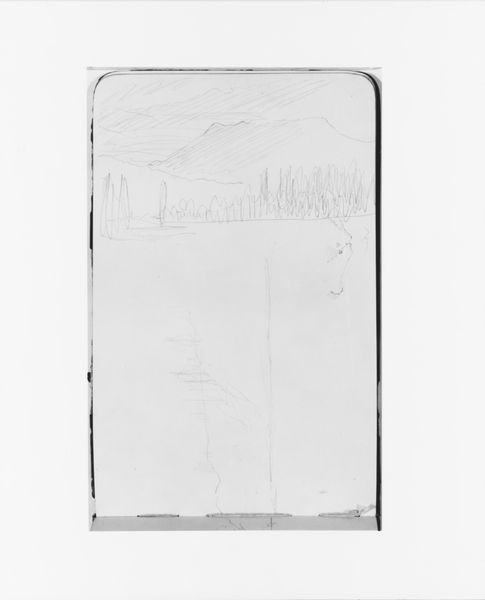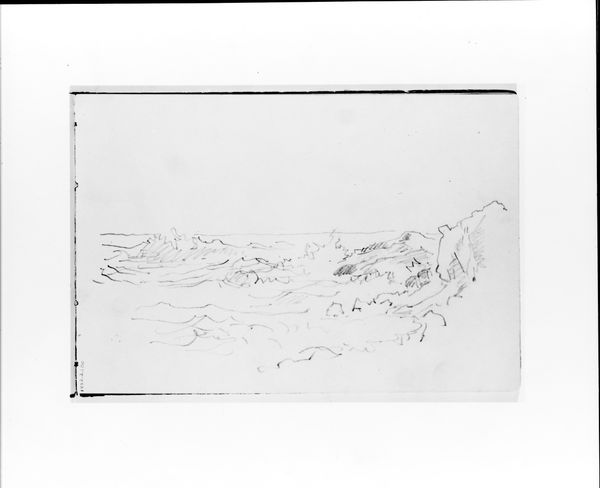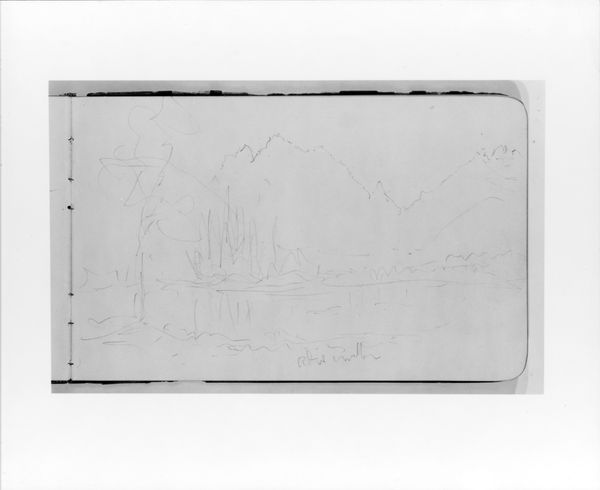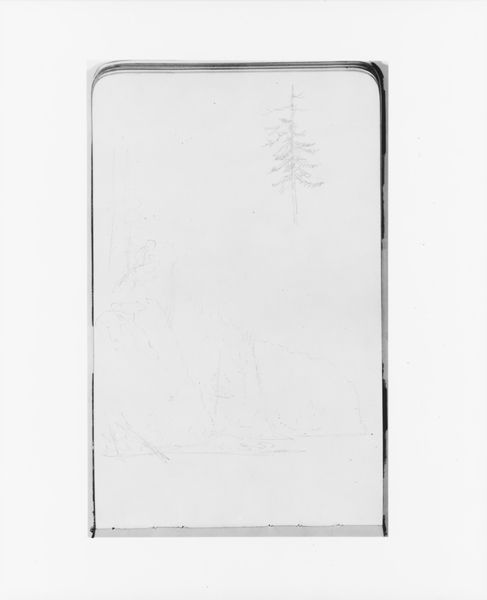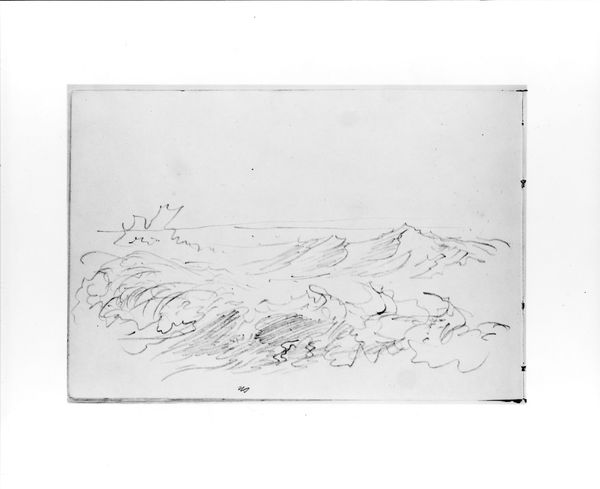
Sketch of a Cliffside with Trees (from Sketchbook) 1890
0:00
0:00
drawing, ink, graphite, pen
#
pen and ink
#
tree
#
drawing
#
incomplete sketchy
#
landscape
#
ink
#
dark shading
#
pen-ink sketch
#
graphite
#
pen
Dimensions: 4 3/4 x 7 3/4 in. (12.1 x 19.7 cm)
Copyright: Public Domain
Albert Bierstadt made this sketch of a cliffside with trees sometime in the 19th century, likely on location, using graphite on paper. The quick strokes and minimal detail suggest that this wasn't intended as a finished work, but rather a preparatory study. The use of graphite, a readily available and easily transportable material, emphasizes its role as a tool for quick observation and documentation. The paper itself, likely from a sketchbook, speaks to the artist's practice of recording and collecting visual information. Consider the labor involved in creating even a seemingly simple sketch like this one. Beyond Bierstadt’s practiced hand, there’s the industrial production of graphite and paper, processes deeply entwined with the social and economic shifts of the 19th century. By considering the materials and the making, we can appreciate this sketch not just as a depiction of a landscape, but also as a product of its time, reflecting the changing relationship between art, industry, and the natural world.
Comments
No comments
Be the first to comment and join the conversation on the ultimate creative platform.
